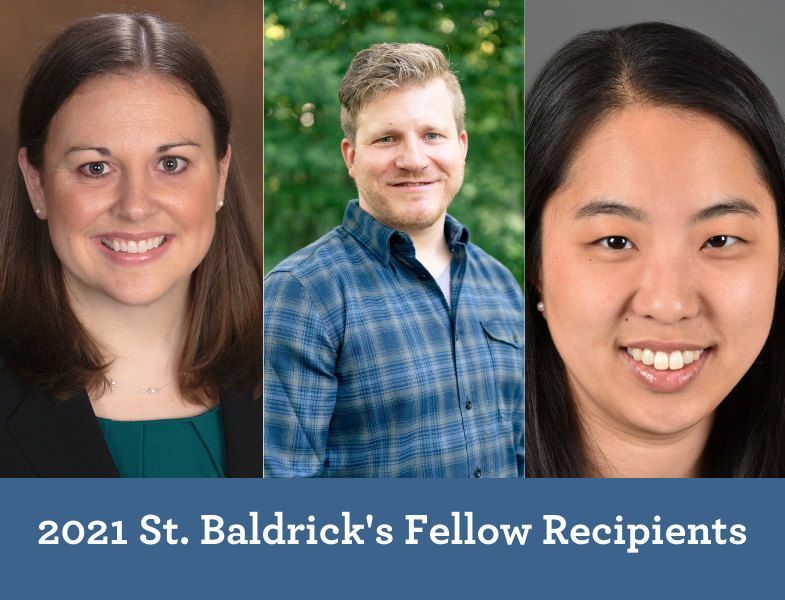The next generation of childhood cancer researchers are hard at work to create better futures for kids with cancer. Thanks to your fundraising and generosity there is hope, and the future is bright!
You – St. Baldrick’s donors and fundraising participants – make this possible. Thank you!
St. Baldrick’s Foundation Fellowship Awards support new pediatric oncology doctors for two to three years to conduct childhood cancer research while receiving advanced training under a mentor.
Take a look at the three stellar new 2021 Fellows whose research you’re supporting:

Dr. Lisa Niswander of Children’s Hospital of Philadelphia aims to create new treatments for high-risk pediatric leukemia patients. Using patients’ own leukemia cells she will be combining two never-before-combined existing treatments – since often two treatments that work in different ways are better than one. She is hopeful that these experiments will identify personalized treatments for future testing in pediatric patients to improve their chances of living long and healthy lives.
Dr. Matthew Kudek of Children’s Hospital of Wisconsin is researching immunotherapy in neuroblastoma. Together with colleagues he has pioneered an innovative technique to boost CAR T cell therapy response. They have shown that the cancer-destroying function of reprogrammed immune cells is boosted when a weakened infection is introduced into a tumor. Encouraged by findings in bladder cancer models, he is now working to determine how this treatment approach can be best applied to neuroblastoma treatment.
Dr. Jessica Tsai of Dana Farber Cancer Institute is focused on the deadly brain tumor, diffuse intrinsic pontine glioma (DIPG). Looking at genes that are turned on or off in a cancer can be helpful to figure out what is causing cancer growth. While looking at genes that are turned on or turned off in DIPG, she found a gene called FOXR2 that is turned on in a subset of these tumors. FOXR is not usually present in the normal brain, but it has high levels in a subset of DIPG tumors. This is exciting because if researchers can target FOXR2 with new therapies, only tumor cells would be affected, sparing the normal cells in the brain. Dr. Tsai aims to figure out exactly how FOXR2 makes DIPG tumors grow and to identify strategies that can be used in new treatments.
The hope for better futures for kids with cancer relies on childhood cancer research – and that research relies — not only today but for decades to come — on the training of the next generation of childhood cancer researchers. This new investment of over $573,000 does just that.
Visit the St. Baldrick’s grants page to learn more about all the research you’re making possible.
Donate now and help support research into better treatments for kids with cancer
Read more on the St. Baldrick’s blog:

 SBF
Tweets »
SBF
Tweets »